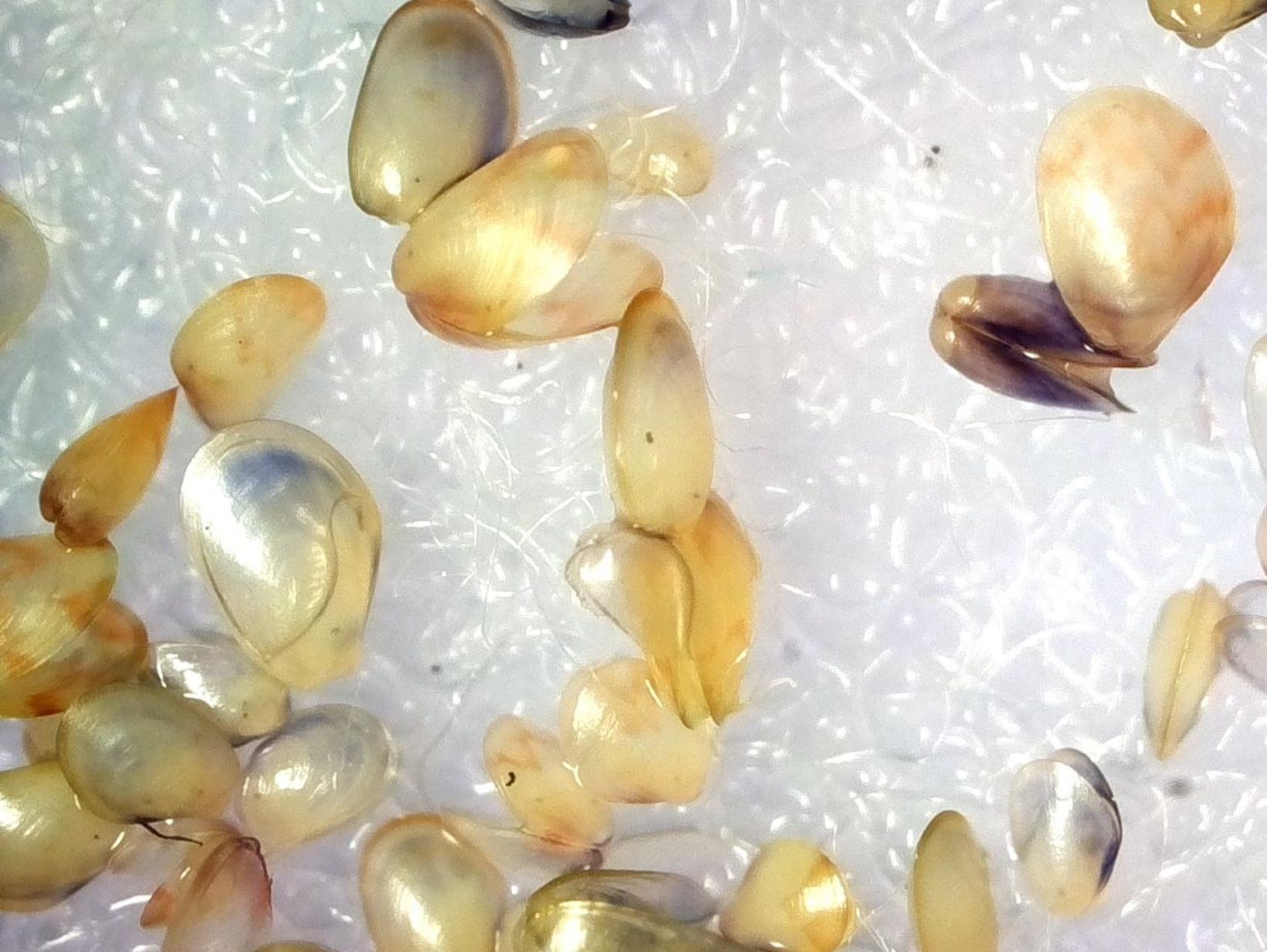A digital imaging platform designed in Dunedin may be the boost the New Zealand Greenshell Mussel industry needs to achieve its goal of being a $1 billion export earner by 2035.
Research using Techion’s digital imaging device coupled with its cloud software could be part of the solution to secure quality spat (juvenile mussels pictured above)) supply, one of the biggest challenges facing New Zealand’s mussel growing industry. According to Dr Dave Taylor, Technical Director at Aquaculture New Zealand (AQNZ) “investing in innovation and technology is vital to unlocking further economic, social and environmental benefits from sustainable aquaculture”. The AQNZ GreenshellTM Mussel Spat Strategy 2019, identifies three focus areas to achieve industry production goals: securing and diversifying spat supplies, optimising spat use, and increasing hatchery production to increase spat retention, resilience and value.
A research project, which has just completed its first phase, may offer the solution. The project was funded by Seafood Innovations Limited in a partnership between Aquaculture New Zealand (AQNZ), Aquaculture Solutions Ltd (AquaSol), and imaging diagnostics platform developer, Techion.
Project partner, Andrea Strang (pictured below) of Aquaculture Solutions (AquaSol) says spat supply underpins the success of New Zealand’s GreenshellTM Mussel industry. “Research shows that if spat retention can be improved by one percent it would increase the amount of spat available by a staggering 20 percent.”
After 15 years monitoring Golden and Tasman Bay’s spat catch using a traditional microscope, Andrea recognised the need to develop a digital solution to assess spat quantity and quality, and identify catches with the best chance of surviving and retaining. Real-time spat quality information will guide spat management decisions and improve outcomes for spat performance. “Retention of spat is often very low; it is currently estimated that less than five percent of wild spat harvested from Te Oneroa-a-Tōhē (90-mile Beach) and less than two percent of wild spat caught on customised ropes at recognised spat catching sites around New Zealand reach maturity.”
“We need a standardised system that can be used on the beach or farm vessels, as well as in the laboratory. A tool to assess mussel spat condition, size, and number, then report those statistics immediately to allow farmers to make informed management decisions about which spat to take and how to care for it, will improve retention. Increasing spat retention by around five percent, could be worth millions of dollars in exports.”
Andrea’s vision led her to world-leading New Zealand agricultural parasitology company Techion, which commercialised FECPAKG2 to count and measure parasite eggs in animal faeces. Techion founder and CEO, Greg Mirams says the recently completed first stage of the research project confirmed the innovative smart digital imaging device known as the Micro-I can be adapted to analyse spat condition, size and number.
“Working in partnership with Andrea Strang and AQNZ we’ve confirmed the Micro-I digital microscope can capture and present images enabling spat counts. Knowing this allows us to move onto the second phase of the project; developing protocols and using artificial intelligence (AI) to speciate and measure spat size and assess their health. All of this can be evaluated by analysing images taken on the portable Micro-I which connects to the platform’s internet cloud for analysis.”
Greg Mirams said once the research is completed he’s confident Techion’s Micro-I will deliver spat assessments in real time, on the beach, onboard vessels or in the lab.
Project partners are preparing to move to phase two of the research, which will develop the technology to pre-commercialisation and incorporate the use of AI image analysis to assess spat quality and quantity.
The value of measuring the viability of spat was made in the 2019 AQNZ Spat Strategy, which described the need for spat managers to reliably count and measure the health and condition of newly settled, microscopic spat. The strategy noted this critical life phase is currently invisible so poorly understood and difficult to manage. Furthermore, by 2025 the industry will require 7.5 million metres of spat seeded on rope to achieve the required forecast harvest.
The report concluded that knowing quantity and quality information for each batch of spat will enable more informed management to enhance spat retention and enable the industry to hit its growth targets.




